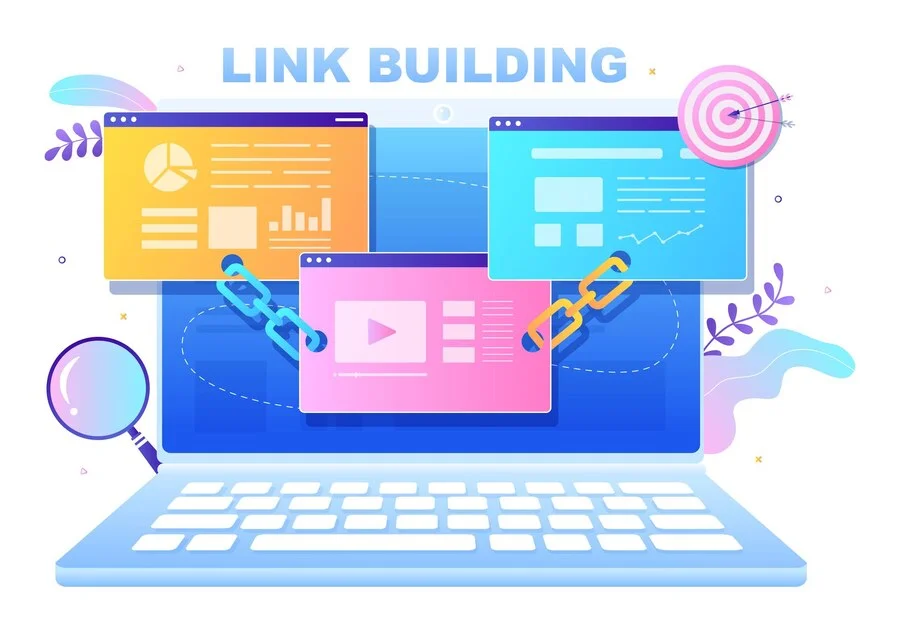SEO
Demystifying Website Maintenance: Understanding the Various Types

Website maintenance is an essential component of managing an online presence. It involves regular tasks and periodic checks to make sure that a website remains functional, secure, and up-to-date. Understanding the different types of website maintenance is essential for businesses and individuals alike to manage their online assets effectively. This article explores the diverse facets of website maintenance and their importance within the digital sphere.
Routine Maintenance
Routine maintenance forms the foundation of website upkeep. It encompasses regular tasks such as updating content, checking for broken links, and optimizing images. It ensures that the website runs well and offers a satisfying user experience. By keeping content fresh and relevant, routine maintenance helps attract and retain visitors, ultimately contributing to the website’s success.
Technical Maintenance
Technical maintenance involves tasks related to the backend of a website. This includes software updates, security patches, and server maintenance. Ensuring that the website’s underlying technology is up-to-date and secure is crucial for protecting against cyber threats and maintaining optimal performance. Neglecting technical maintenance can leave a website vulnerable to security breaches and downtime, negatively impacting its reputation and credibility.
Content Maintenance
Content is king in the online world, and content maintenance focuses on keeping it accurate, engaging, and aligned with the target audience’s needs. This type of maintenance involves updating outdated information, adding new content, and optimizing existing content for search engines. Regularly updating and fine-tuning content can elevate website owners’ search engine standings, increase organic traffic, and foster returning visitors.
Design Maintenance
A website’s visual appeal greatly influences how consumers perceive it and engage with it. Design maintenance involves keeping the website’s design fresh, modern, and user-friendly. This includes updating outdated aesthetics, optimizing for mobile responsiveness, and enhancing user interface elements. A well-maintained design not only enhances the user experience but also reflects positively on the brand’s professionalism and credibility.
Performance Maintenance
Website performance directly impacts user satisfaction and engagement. Performance maintenance optimizes load times, minimizes page errors, and improves overall site speed. This type of maintenance ensures that visitors can access the website quickly and seamlessly across various devices and network conditions. Website owners can reduce bounce rates, increase conversions, and enhance their online reputation by prioritizing performance maintenance.
SEO Maintenance
Search engine optimization (SEO) ensures that a website appears high on search engine results pages (SERPs). SEO maintenance involves ongoing efforts to improve visibility, increase organic traffic, and outrank competitors. This includes keyword research, on-page optimization, and link-building strategies. Website owners can keep a competitive edge in the digital marketplace by staying abreast of SEO best practices and algorithm updates.
Security Maintenance
Cybersecurity threats pose a significant risk to websites of all sizes and industries. Security maintenance focuses on protecting against malware, hacking attempts, and data breaches. This entails integrating strong security protocols like firewalls, encryption, and routine backups. By prioritizing security maintenance, website owners can safeguard sensitive information, preserve user trust, and mitigate potential damages from security incidents.
Website maintenance is a multifaceted endeavor encompassing various tasks and activities. By understanding the various types of website maintenance and their significance, businesses and individuals can effectively manage their online assets and ensure their long-term success in the digital landscape. From routine content updates to critical security measures, each type of maintenance plays a significant role in keeping a website functional, secure, and relevant in today’s ever-evolving online ecosystem.
SEO
Mastering Content Creation: How AI Humanizer Pro Helps You Write Like a Human

In today’s fast-paced digital world, creating high-quality content quickly is essential. However, even with advanced AI tools available, writing that truly resonates with human readers can be a challenge. AI-generated content often lacks the nuance, tone, and flow that make it easy for readers to engage with. That’s where AI Humanizer Pro comes into play. This powerful, free tool helps transform robotic AI writing into content that feels natural, polished, and human-like.
AI Humanizer Pro is a simple yet effective solution designed to humanize short texts, emails, and paragraphs. If you’ve ever struggled with AI-generated content that feels stiff or unnatural, you can now use Humanizer Pro to enhance it. The tool is straightforward to use, offering fast results without any need for complex steps. It helps convert dry, robotic text into content that sounds professional and approachable. This is particularly useful for those who need to improve their AI content quickly, such as in email campaigns or social media posts.
Why Choose AI Humanizer Pro for Your Content Needs
AI Humanizer Pro stands out because of its unique ability to humanize short-form AI content. It is best suited for those looking to improve text in a hurry, such as emails, social media posts, or small blog entries. The tool’s design allows for rapid, high-quality content adjustments in no time.
One of the main advantages of AI Humanizer Pro is its simplicity. Unlike many complex content tools that require deep knowledge or hours of training, AI Humanizer Pro is easy for anyone to use. There are no complicated settings to adjust, and the results are immediate, which makes it perfect for quick fixes. For those who need to edit AI-generated content on a daily basis, AI Humanizer Pro offers an efficient and cost-effective solution that delivers quick, readable results.
AI Humanizer Pro is completely free, with a daily word limit of up to 5,000 words. While this may not be suitable for large-scale projects, it works well for businesses, marketers, or writers who focus on smaller pieces of content. It is an ideal tool for anyone needing fast content humanization on a regular basis, such as email campaigns or short blog posts.
How Does AI Humanizer Pro Work?
The process is simple, and it requires no advanced technical knowledge. Here’s a step-by-step guide to using AI Humanizer Pro:
- Input Your Text: Copy and paste the AI-generated text into the tool’s input box.
- Click the Humanize Button: Once you’ve pasted your text, click the “humanize” button to let AI Humanizer Pro do its magic.
- Download or Use: After the text is humanized, you can either download it or directly use it on your site or platform.
It’s that simple! In a matter of seconds, your robotic content becomes more conversational and engaging. AI Humanizer Pro doesn’t just change a few words; it alters the structure, tone, and flow of the content to make it more readable.
The tool is tailored to humanize short texts, but it’s effective for small adjustments. If you’re looking to create lengthy articles or conduct complex paraphrasing, AI Humanizer Pro may not be sufficient. Its strength lies in making quick improvements to smaller pieces of writing.
Benefits of Using AI Humanizer Pro
- Improved Readability: AI Humanizer Pro makes AI-generated content more readable, ensuring it sounds natural and engaging for your audience.
- Free and Accessible: The tool is completely free to use with daily word limits, making it accessible for everyone.
- Simple and Quick: With no learning curve, AI Humanizer Pro provides immediate results, perfect for busy content creators.
- Perfect for Short Texts: Whether you need to humanize emails, social media posts, or short articles, this tool is a perfect match.
Who Should Use AI Humanizer Pro?
AI Humanizer Pro is designed for individuals and businesses who need quick and effective content improvements. It is particularly useful for:
- Marketers: Marketers who need to improve email campaigns, social media posts, and product descriptions.
- Content Creators: Bloggers or social media influencers who work with AI-generated content regularly.
- Small Businesses: Businesses that need quick edits for their website copy or product descriptions.
- Freelancers: Freelance writers who want to streamline their workflow and enhance their text with minimal effort.
This tool is designed for those who work with short content. If you have long articles or complex content that requires detailed adjustments, you might need a more advanced tool.
Limitations of AI Humanizer Pro
While AI Humanizer Pro is a great tool for quick improvements, it does have its limitations. Here are a few to consider:
- Daily Word Limits: The tool allows for up to 5,000 words per day, which might not be enough for larger projects.
- Lack of Advanced Features: AI Humanizer Pro doesn’t offer features like summarization or deep paraphrasing, limiting its use for specific content needs.
- Short Text Focus: It’s best suited for short pieces of content, such as emails, short paragraphs, and social media posts.
Conclusion
In conclusion, AI Humanizer Pro is a straightforward, free tool that can greatly enhance short AI-generated content. If you’re looking to use Humanizer Pro to make your text sound more natural and polished, it’s a quick and simple solution for improving readability. While it may not replace more advanced content tools, it provides an excellent way to humanize smaller text, making it a valuable asset for anyone needing high-quality content quickly.
AI Humanizer Pro’s focus on simplicity and ease of use makes it an ideal tool for marketers, content creators, and businesses that rely on AI-generated text. With just a few clicks, you can transform robotic writing into polished, human-like content.
SEO
Understanding Backlinks: A Comprehensive Guide for Enhancing Your SEO

Backlinks are fundamental to SEO success, serving as endorsements from one website to another. Recognized by search engines as votes of confidence, quality backlinks can significantly improve a site’s visibility and ranking.
What Are Backlinks?
Backlinks, also known as inbound or incoming links, occur when one website links to another. These are crucial for SEO because they signal to search engines that others vouch for your content. This endorsement can boost your site’s credibility and, ultimately, its rank in search engine results pages (SERPs).
The Importance of Quality Backlinks
Not all backlinks are created equal. The best backlinks have several key characteristics:
- Authority: Links from reputable, high-authority sites provide more value.
- Relevance: Links from sites within the same industry or niche are more beneficial.
- Dofollow Status: Dofollow links allow search engines to follow them and pass on link equity, unlike nofollow links, which do not pass on link equity.
- Anchor Text: The clickable text part of a hyperlink. Ideally, anchor text should be relevant to the linked page.
- Placement: Links placed within the main body of a webpage are generally more powerful than those in the footer or sidebar.
How to Acquire Quality Backlinks
Are you looking to Backlinks kaufen? Then you have come to the right place.
- Create Compelling Content: Produce high-quality content that addresses the needs and interests of your target audience. This includes in-depth articles, infographics, videos, and more that provide value and encourage other sites to link back to your content naturally.
- Guest Blogging: Writing articles for other relevant blogs can provide backlinks and is an effective way to reach new audiences.
- Broken Link Building: This involves finding broken links on other websites and suggesting your content as a replacement.
- Skyscraper Technique: Identify popular content with lots of backlinks, create something better, and then reach out to those who linked to the original piece.
- Engage in Community Discussions: Participate in forums and comment sections where you can provide valuable insights and link back to relevant content on your site.
Avoiding Backlink Pitfalls
- Buying Backlinks: This can lead to severe penalties from Google.
- Irrelevant Links: Links from unrelated sites may not contribute value and can sometimes harm your site’s standing.
- Over-Optimization: Excessive use of keyword-rich anchor text can look spammy and lead to penalties.
Tools and Strategies for Effective Backlink Management
- Use Tools like Ahrefs or Google Search Console: These tools can help you track your backlinks and the quality of links.
- Regular Audits: Periodically check your link profile for any low-quality or spammy links that could harm your ranking.
- Focus on Organic Growth: Encourage natural link development through networking and collaborative opportunities with authoritative sites in your industry.
Conclusion
Backlinks remain a cornerstone of successful SEO strategies. By focusing on quality over quantity, engaging in ethical link-building practices, and continuously creating valuable content, websites can improve their SEO performance significantly. Remember, a good backlink profile helps not only in enhancing your SEO but also in establishing your site as a credible and authoritative source in your industry.
SEO
Conquering the Kenyan Web: Best Practices for SEO in Nairobi

Nairobi’s digital landscape is a bustling marketplace where businesses of all sizes vie for online visibility. Search Engine Optimization in Nairobi (SEO) is the key to unlocking organic traffic and attracting potential customers through search engines like Google. However, a one-size-fits-all SEO strategy won’t suffice in the unique Kenyan market. This article explores best practices specifically tailored to help Nairobi businesses dominate local search results.
Keyword Research with a Kenyan Twist
Keyword research is the cornerstone of any successful SEO campaign. Here’s how a digital marketing agency in Nairobi can tailor its SEO services for the Nairobi market:
- Localize Your Keywords: Go beyond generic keywords and identify long-tail keywords with local relevance. Kenyans might search for “best restaurants Nairobi CBD” instead of just “best restaurants.”
- Consider Swahili Keywords: Swahili is a widely spoken language in Kenya. Incorporate Swahili keywords into your content strategy to reach a broader audience (e.g., “hoteli za kifahari Nairobi” for luxury hotels).
- Utilize Local Search Tools: Leverage Google Keyword Planner and local SEO tools to identify popular search terms with high search volume and low competition specific to Nairobi.
On-Page Optimization: Optimizing Your Website for Local Success
Once you have your keywords, optimize your website to improve search engine ranking and user experience:
- Target Keywords in Strategic Locations: Integrate relevant keywords naturally into your website’s title tags, Meta descriptions, headers (H1, H2, etc.), and throughout the content.
- Location, Location, Location: Optimize your Google My Business listing with accurate business information, high-quality photos, and positive customer reviews. Encourage satisfied clients to leave reviews to boost local SEO.
- Mobile-First Approach: A significant portion of Nairobi’s online population accesses the internet via smartphones. Ensure your website offers a seamless user experience for mobile users with fast loading speed and responsive design.
- Content is King (and Queen): Create high-quality, informative content that resonates with your local target audience. Address their specific needs and challenges, showcase local success stories, and highlight your expertise in the Kenyan market.
- Optimize Images with Local Context: Include relevant keywords in image alt tags and use high-quality visuals that reflect the Kenyan culture and local landscape.
Building Backlinks: Earning Trust in the Kenyan Online Sphere
Backlinks from reputable websites act as votes of confidence for your website in the eyes of search engines. Here’s how to build trust and secure high-quality backlinks in Nairobi:
- Collaborate with Local Businesses: Partner with complementary businesses in Nairobi for guest blogging opportunities or co-creating informative content that benefits both audiences.
- Target Local Online Publications: Reach out to Kenyan online publications, blogs, and directories relevant to your industry and explore guest blogging opportunities to earn backlinks from high-authority websites.
- Engage on Social Media: Actively participate in relevant online communities and social media groups in Nairobi. Share valuable content, engage in discussions, and build relationships with influencers who might be willing to link back to your website.
- Focus on Quality over Quantity: Prioritize earning backlinks from high-quality, relevant websites in the Kenyan online space. Avoid low-quality link farms and schemes that can negatively impact your SEO efforts.
Technical SEO: Ensuring a Smooth User Experience for All
Technical SEO ensures your website functions flawlessly and is easily crawled by search engines:
- Website Speed Optimization: Website loading speed is a crucial ranking factor. Use website speed testing tools and implement techniques to improve website speed for a smooth user experience.
- Structured Data Implementation: Utilize structured data markup to provide search engines with additional information about your website content, potentially improving search result snippets and attracting more clicks.
- Mobile Responsiveness: Ensure your website adapts and displays correctly across all devices, especially smartphones, to cater to the mobile-first user base in Nairobi.
- Regular Website Audits: Conduct regular technical SEO audits to identify any crawl errors, broken links, or technical issues that might hinder your website’s ranking.
Staying Ahead of the Curve: Embracing Local Trends and Google Updates
The SEO landscape is constantly evolving. Here’s how to stay competitive in the Nairobi market:
- Monitor Google Algorithm Updates: Stay informed about the latest Google algorithm updates and adjust your SEO strategy accordingly. Focus on white-hat SEO techniques and user experience to ensure long-term success.
- Embrace Voice Search Optimization: Voice search is becoming increasingly popular. Optimize your website content with natural language and long-tail keywords to improve your ranking for voice search queries.
- Focus on Local Events and Trends: Stay updated on local events, trends, and news.

 BUSINESS10 months ago
BUSINESS10 months agoBrand Visibility with Imprint Now and Custom Poly Mailers

 TECHNOLOGY8 months ago
TECHNOLOGY8 months agoDizipal 608: The Tech Revolution Redefined

 BUSINESS10 months ago
BUSINESS10 months agoExploring the Benefits of Commercial Printing

 HEALTH9 months ago
HEALTH9 months agoHappy Hippo Kratom Reviews: Read Before You Buy!

 HOME IMPROVEMENT10 months ago
HOME IMPROVEMENT10 months agoThe Do’s and Don’ts of Renting Rubbish Bins for Your Next Renovation

 HEALTH6 months ago
HEALTH6 months agoYour Guide to Shedding Pounds in the Digital Age

 LIFESTYLE10 months ago
LIFESTYLE10 months agoThe Disciplinary Wives Club: Spanking for Love, Not Punishment

 HEALTH6 months ago
HEALTH6 months agoThe Surprising Benefits of Weight Loss Peptides You Need to Know












